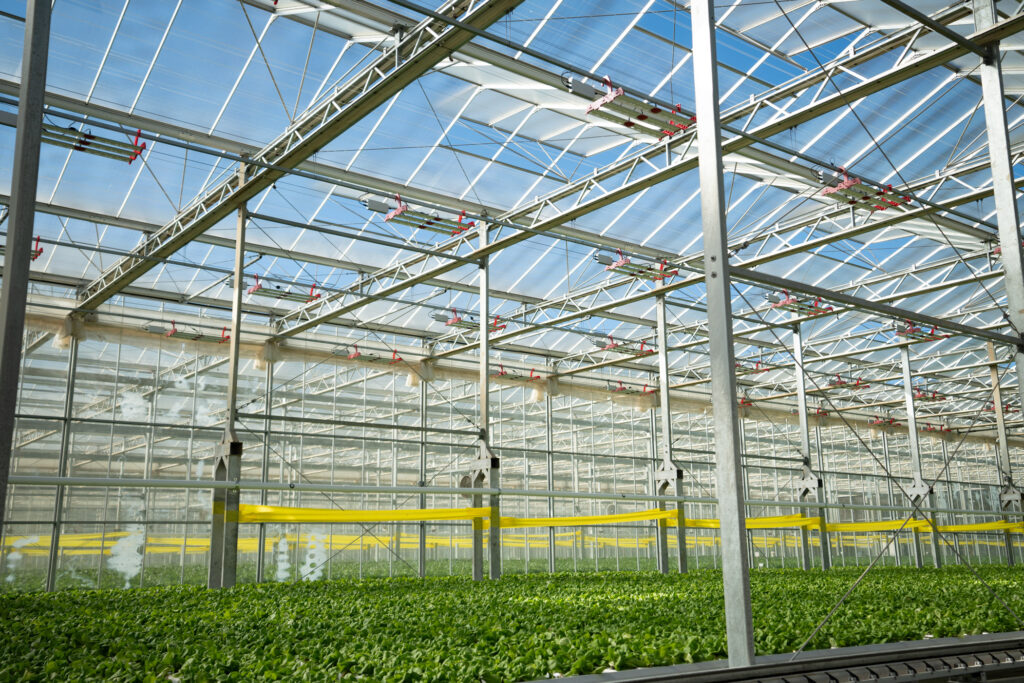
March 28, 2025
Introduction
Light is both a critical driver of plant growth and a major contribution to operational costs in controlled environment agriculture (CEA). High-efficiency LEDs have already transformed modern cultivation by reducing energy use and improving light uniformity, but we are approaching an upper limit for improving fixture efficacy[1]. For this reason, researchers and growers alike continue to seek novel lighting strategies for reducing energy use while maintaining productivity. Pulsed LED lighting has emerged as a promising strategy for improving the economics and sustainability of CEA. By delivering light in rapid on–off cycles, imperceptible to the human eye, pulsed lighting can significantly lower energy use while maintaining—or potentially improving—plant growth, photosynthetic efficiency, and nutritional quality compared to continuous lighting. Below is a concise overview of recent findings on the impacts of pulsed LED lighting.
Energy Use Efficiency
Pulsing reduces the time lights actively draw current, thus lowering overall electricity consumption. Reported energy savings of 10–40% exist when frequency, duty cycle, and driver design are carefully aligned with crop needs[2,3]. However, setup complexity and hardware costs must be weighed against potential efficiency gains.
Growth and Yield
Lettuce and other crops grown under pulsed LEDs can match or exceed the growth achieved under continuous lighting if the daily light integral (DLI) is maintained[2–4]. In some cases, pulsed treatments increased fresh and dry weight by up to 30% while preserving or improving crop quality[2,4].
Photosynthetic Efficiency
High-frequency pulses can supply photons in short bursts that photosynthetic reaction centers use effectively. Some studies show similar or slightly improved net assimilation under pulsed conditions by adequately saturating the photosystems while avoiding photoinhibition[2,5].
Morphological Responses (Leaf Area)
Increased leaf expansion has been documented in lettuce under pulsed, multispectral LEDs. By increasing leaf area, plants capture more photons, which can indirectly drive greater biomass accumulation even if photosynthetic efficiency itself remains unchanged.
Quality & Nutritional Factors
Improvements in chlorophyll content, antioxidant levels, and phenolic compounds have been observed in lettuce and other leafy greens grown under pulsed LEDs[2,4]. This suggests pulsing may offer value in enhancing both marketable appearance and health-promoting compounds.
Practical Implications for Growers
- Balancing Complexity and Cost: Pulsed LED lighting often involves specialized drivers and controls. While potential energy savings are promising, growers must analyze whether the savings justify the added hardware and system complexity.
- Crop-Specific Optimization: Pulse frequencies and duty cycles that benefit lettuce, for example, may not necessarily translate to tomatoes or cannabis. Each crop may require specific tuning, and some may respond less favorably to pulsing.
- Minimizing Heat Load: Pulsed LED lighting can reduce heat load compared to continuous lighting, reducing the need for HVAC/cooling infrastructure. However, this should be confirmed through direct measurement, as this depends on both “on-phase” intensity and environmental conditions.
- Quality and Market Value: For crops sold fresh, like lettuce, improvements in leaf color, texture, or nutrient content can add market value that justifies up-front investment.
Conclusion
Pulsed LED lighting holds promise for enhanced energy efficiency while maintaining productivity and product quality in controlled-environment agriculture. As research continues to explore pulse frequencies, duty cycles, and species-specific responses, the practical potential for pulsed lighting in CEA should become more clear. For now, its most certain benefit lies in energy-use reduction, with encouraging but variable impacts on growth and quality.
References
- Kusuma, P., Pattison, P. M. & Bugbee, B. From physics to fixtures to food: current and potential LED efficacy. Horticulture Research 7, 1–9 (2020).
- Carotti, L. et al. Pulsed LED Light: Exploring the Balance between Energy Use and Nutraceutical Properties in Indoor-Grown Lettuce. Agronomy 11, 1106 (2021).
- Olvera-Gonzalez, E. et al. Pulsed LED-Lighting as an Alternative Energy Savings Technique for Vertical Farms and Plant Factories. Energies 14, 1603 (2021).
- Miliauskienė, J., Karlicek, R. F. & Kolmos, E. Effect of Multispectral Pulsed Light-Emitting Diodes on the Growth, Photosynthetic and Antioxidant Response of Baby Leaf Lettuce (Lactuca sativa L.). Plants 10, 762 (2021).
- Tennessen, D. J., Bula, R. J. & Sharkey, T. D. Efficiency of photosynthesis in continuous and pulsed light emitting diode irradiation. Photosynth Res 44, 261–269 (1995).




